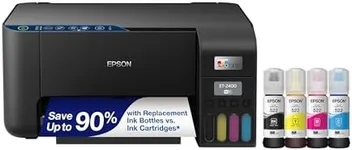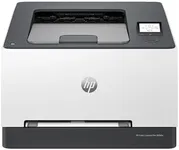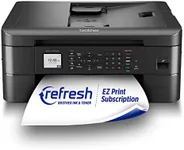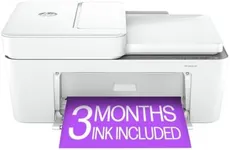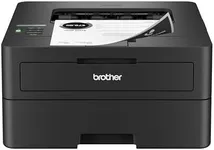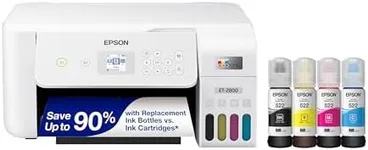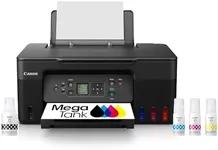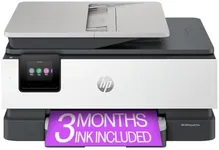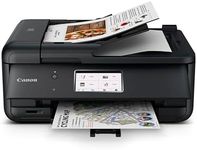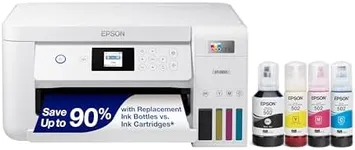Buying Guide for the Best Low Budget Printer
Choosing the right low-budget printer involves understanding your specific needs and matching them with the printer's features. Whether you need a printer for occasional home use, school projects, or a small office, knowing what to look for can help you make an informed decision. Here are some key specifications to consider when selecting a low-budget printer.Print TechnologyPrint technology refers to the method a printer uses to produce text and images on paper. The two main types are inkjet and laser printers. Inkjet printers are generally more affordable and better for printing high-quality color images and photos. Laser printers, on the other hand, are faster and more cost-effective for high-volume black-and-white printing. If you need to print a lot of documents quickly, a laser printer might be the better choice. For occasional color printing, an inkjet printer would be suitable.
Print SpeedPrint speed is measured in pages per minute (PPM) and indicates how quickly a printer can produce printed pages. This is important if you need to print large documents frequently. Low-budget printers typically have a print speed ranging from 5 to 20 PPM. If you only print occasionally, a lower PPM is acceptable. However, if you print frequently or in large volumes, look for a printer with a higher PPM to save time.
Print QualityPrint quality is measured in dots per inch (DPI) and determines the clarity and detail of the printed output. Higher DPI values mean better print quality. For general document printing, a DPI of 600x600 is usually sufficient. If you need to print high-quality images or photos, look for a printer with a higher DPI, such as 1200x1200 or more. Consider your primary use: for text documents, standard DPI is fine; for images, higher DPI is better.
Connectivity OptionsConnectivity options refer to how you can connect your printer to your computer or other devices. Common options include USB, Wi-Fi, and Ethernet. USB is straightforward and reliable for direct connections. Wi-Fi allows for wireless printing from multiple devices, which is convenient for home or small office use. Ethernet is useful for wired network connections in an office setting. Choose based on your setup: for single-device use, USB is fine; for multiple devices, Wi-Fi is more flexible.
Paper HandlingPaper handling refers to the types and sizes of paper a printer can accommodate, as well as the capacity of its paper tray. Low-budget printers typically handle standard letter and legal sizes, but some can also print on envelopes, labels, and photo paper. The paper tray capacity can range from 50 to 250 sheets. If you print frequently, a larger capacity tray will reduce the need for constant refilling. Consider what types of paper you will use and how often you print to determine the right paper handling features.
Cost of ConsumablesThe cost of consumables includes ink or toner cartridges and paper. This is an important factor because it affects the long-term cost of owning the printer. Inkjet printers generally have lower initial costs but higher ongoing costs for ink. Laser printers have higher initial costs but lower costs per page for toner. Check the price and yield of replacement cartridges to estimate your ongoing expenses. If you print a lot, a printer with lower-cost consumables will be more economical in the long run.
Additional FeaturesAdditional features can enhance the functionality of your printer. Common features include scanning, copying, and faxing capabilities, which are useful for home offices or small businesses. Duplex printing (automatic double-sided printing) saves paper and is convenient for large documents. Mobile printing support allows you to print directly from smartphones or tablets. Consider which additional features are important for your needs and choose a printer that offers those functionalities.


